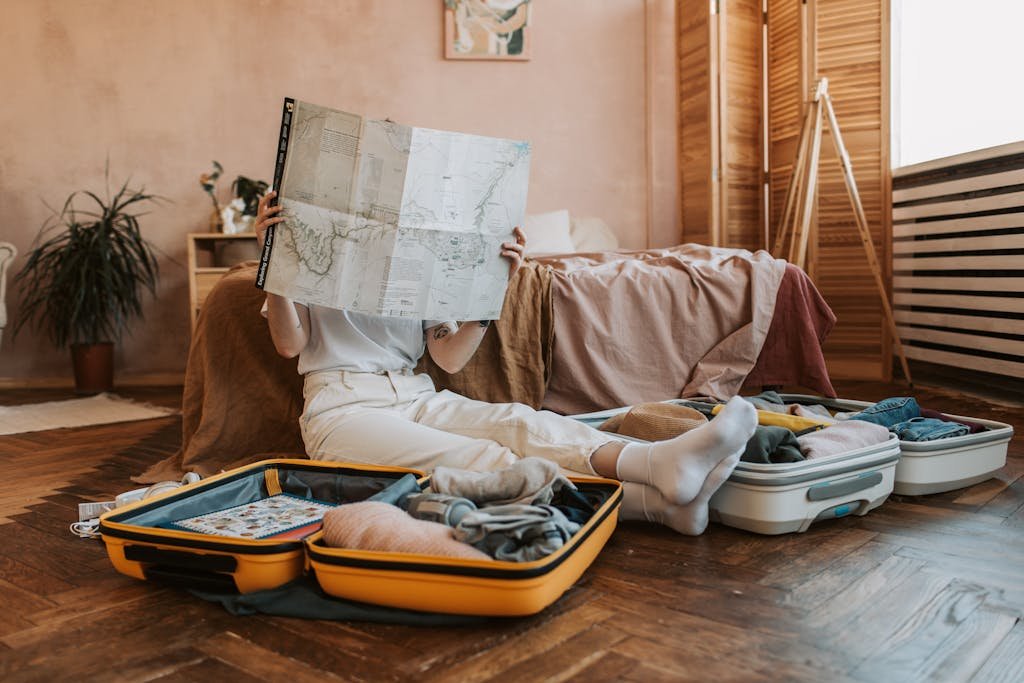Master Your European Dream: The Ultimate Packing List for Europe That Will Transform Your 3-6 Month Adventure
Picture this: you’re strolling through Prague’s cobblestone squares at sunrise, the golden light dancing across medieval spires, knowing you have everything you need tucked neatly in your luggage for the months ahead. Your European odyssey awaits, and unlike those frantic two-week vacations of your younger years, this journey offers something precious—time to truly absorb the continent’s magic. But here’s the thing about extended European travel: your packing list for Europe needs to be as thoughtful and strategic as your itinerary.
Why Your European Adventure Demands a Different Packing Philosophy
I’ve learned through countless conversations with seasoned European travelers that the biggest mistake couples over 50 make is overpacking for their first extended trip. You’ll find laundromats in every European city, from tiny Tuscan villages to bustling Berlin neighborhoods. The key is building a versatile wardrobe that transitions seamlessly from morning museum visits to evening dinners at those candlelit trattorias you’ve dreamed about.

Building Your European Wardrobe: The Foundation of Smart Packing
The secret to mastering your packing list for Europe lies in creating a capsule wardrobe that works as hard as you do. Start with a neutral color palette—think charcoal, navy, cream, and one accent color that makes you feel fabulous. I always recommend bringing pieces in colors that hide the inevitable gelato stains and red wine splashes that come with authentic European experiences.
Your foundation should include moisture-wicking undergarments and comfortable sleepwear. European hotels often have different heating systems than we’re used to, and you’ll appreciate quality pajamas during those unexpectedly cool Parisian spring nights or warm Roman summers. Don’t overlook compression socks—they’re a game-changer for those long days exploring the Louvre or hiking the Scottish Highlands.
Seasonal Mastery: Preparing for Europe’s Ever-Changing Moods
Europe’s seasons are like a beloved opera—dramatic, beautiful, and completely transformative. Add a coat, long underwear (super-light silk or other quick-drying fabric), scarf, gloves, hat, and an extra pair of socks and underwear, since things dry more slowly. Your packing list for Europe must include layering pieces that can handle everything from Venice’s humid summers to Scotland’s unpredictable weather.
Spring and fall are particularly tricky. You might start your day in a light sweater watching the sunrise over the Thames, then find yourself peeling off layers as you climb the hills of Santorini by afternoon. Pack a lightweight, packable down jacket—it’s worth its weight in gold when you’re caught in an unexpected Alpine storm or dining al fresco on a chilly evening in Copenhagen.
Summer European travel brings its own challenges. While you’ll want breathable fabrics and sun protection, remember that many churches and religious sites require covered shoulders and longer hemlines. A lightweight scarf becomes your best friend—it’s sun protection, a cover-up for sacred spaces, and a stylish accessory all in one.
The Art of European Footwear: Where Comfort Meets Cobblestones
European cities weren’t built for modern footwear sensibilities. Those charming cobblestone streets that look so romantic in travel magazines can be challenging for unprepared feet. Your packing list for Europe should include at least two pairs of broken-in walking shoes. I can’t stress this enough—break them in completely before you leave home.
Pack one pair of sturdy, supportive walking shoes for daily exploration and a slightly dressier pair for evenings out. European style tends to be more polished than typical American casual wear, especially for dining. Ankle boots are very popular and a pair of nice sneakers or flats are great to have while exploring around. Consider waterproof options if you’re traveling during shoulder seasons.
Health and Wellness: Your European Peace of Mind Kit
Extended European travel requires a different approach to health preparation than short trips. Your packing list for Europe should include a comprehensive first-aid kit tailored to common travel ailments. Other handy items include hand sanitiser, painkillers, electrolytes, antiseptic ointment and bandaids, eye drops, insect repellent and travel sickness tablets.
Don’t forget prescription medications with proper documentation, including generic names and dosages in case you need refills abroad. European pharmacies are generally excellent, but having your medical information readily available saves precious vacation time. Pack extra glasses or contact lenses—trust me, trying to get an eye exam in rural Tuscany isn’t how you want to spend your Tuesday afternoon.
Technology and Staying Connected: Your Digital European Toolkit
Your packing list for Europe needs to address the reality of staying connected across multiple countries with different electrical systems. A universal adapter is essential, but invest in one with multiple USB ports to charge several devices simultaneously. European hotel rooms often have limited outlet availability.
Consider a portable WiFi device if you’re planning extensive travel outside major cities. While most European destinations have excellent internet infrastructure, having backup connectivity gives you peace of mind when navigating unfamiliar territories or staying in touch with family back home.
The Luggage Strategy That Changes Everything
Here’s where European travel gets interesting for our demographic. You’re not backpacking through hostels—you’re choosing comfortable accommodations and traveling with intention. Your packing list for Europe should fit within a wheeled luggage system that you can manage independently.
I recommend a two-piece strategy: a larger checked bag for your main wardrobe and a carry-on that contains everything you’d need for three days. This approach protects you against lost luggage while ensuring you can navigate train stations and hotel entrances with dignity and ease.
Packing cubes are particularly valuable for extended European travel. They keep your belongings organized throughout multiple hotel changes and make laundry day much more manageable. Color-code them—one color for undergarments, another for tops, and so forth.
Cultural Considerations: Dressing the European Part
European style sensibilities differ from American casual wear, and your packing list for Europe should reflect this cultural awareness. Generally, Europeans dress more formally for everyday activities. What we consider “dressy casual” often represents standard European street wear.
Pack at least one outfit suitable for upscale dining—European evenings often extend long into the night over wonderful meals, and you’ll want to look and feel appropriate. This doesn’t mean formal wear, but rather polished pieces that work together elegantly.
Laundry Logistics: The European Washing Reality
Extended European travel means making friends with European laundry systems. Your packing list for Europe should include quick-drying fabrics and a small supply of travel laundry detergent. European washing machines are often smaller and use different cycles than American machines, and many European dryers are less aggressive, meaning clothes take longer to dry.
Pack items you can hand-wash in hotel sinks for emergencies. Merino wool and synthetic blends are particularly good for this—they dry quickly and resist odors. Some travelers swear by packing a small clothesline and clips for bathroom drying.
What to Leave Behind: Liberating Yourself from Over-Packing
The hardest part of creating your packing list for Europe might be deciding what NOT to bring. Leave room in your luggage for the treasures you’ll inevitably want to bring home—that perfect Venetian glass, Scottish cashmere, or French pottery.
Resist packing multiples of electronics “just in case.” European cities have excellent shopping for anything you might need to replace. The same goes for toiletries—European pharmacies and stores carry high-quality versions of everything you use at home, often in more convenient travel sizes.
Sample Packing List for Europe: Your Starting Point
Here’s a foundational packing list for Europe that works for most 3-6 month European adventures:
Clothing Foundation:
- 7-10 pairs of undergarments (moisture-wicking preferred)
- 7-10 pairs of socks (include compression socks)
- 2-3 pairs of comfortable pants/trousers
- 1 pair of dressier pants
- 5-7 tops that mix and match
- 2-3 layering pieces (cardigan, light sweater)
- 1 packable down jacket or warm coat
- 1 rain jacket or compact umbrella
- Sleepwear and loungewear
Footwear:
- Comfortable walking shoes (broken in)
- Dressier shoes for evenings
- Slippers or comfortable indoor shoes
Health and Personal Care:
- Prescription medications (with documentation)
- First-aid kit basics
- Personal toiletries in travel sizes
- Sunscreen and sunglasses
- Any special health items you regularly use
Technology:
- Universal power adapter with USB ports
- Phone and charger
- Camera (or rely on phone camera)
- Portable charger/power bank
FAQ: Your European Packing Questions Answered
Q: How much should I budget for laundry during extended European travel? A: Budget approximately €5-15 per load for laundromats, or €20-40 for hotel laundry services. Many accommodations offer washing facilities, especially if you’re staying in apartments or longer-term rentals.
Q: Should I pack formal clothes for my European adventure? A: Pack one versatile dressy outfit. European dining culture often calls for more polished attire than typical American casual wear, especially for dinner reservations.
Q: Can I buy toiletries and personal care items easily in Europe? A: Absolutely. European pharmacies and stores carry excellent toiletries, often in convenient travel sizes. Focus on packing only specialty items you can’t live without.
Your European Adventure Awaits
Creating the perfect packing list for Europe is about more than just clothes and toiletries—it’s about preparing yourself for transformation. Every item you choose should enhance your ability to embrace spontaneous moments, whether that’s accepting an impromptu dinner invitation from new Austrian friends or deciding to extend your stay in that perfect little Portuguese coastal town.
Remember, the goal isn’t to bring everything you might possibly need. The goal is to bring everything that will help you fully experience Europe’s incredible tapestry of cultures, landscapes, and experiences. Your carefully curated packing list for Europe becomes the foundation for memories that will last a lifetime.
Pack thoughtfully, travel confidently, and prepare to fall in love with Europe—one cobblestone street, one incredible meal, one breathtaking sunset at a time.
Resources for Packing Advice
- CDC Travel Medication Guidelines – Referenced when discussing prescription medication documentation requirements The ultimate Europe packing list, according to travel experts | CNN Underscored
- EU Prescription Regulations – Mentioned in context of using prescriptions across European countries Planning a trip to Europe? These are the 15 essential items you need to pack
- Rick Steves Packing Philosophy – Cited his advice about taking fewer items and doing laundry more often Savvy Senior Travelers by Rick Steves
- Rick Steves Fabric Recommendations – Referenced his specific advice about synthetic-blend fabrics that dry overnight 10 Best Tours of Europe for Seniors and Over 50s – TourRadar
